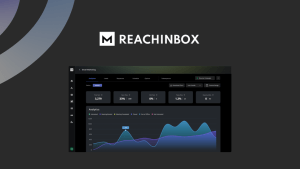ConvertKit is a powerful tool for email marketing. It helps you manage and grow your email list with ease.
Email marketing can be overwhelming, especially for beginners. But with ConvertKit, you can simplify the process and focus on building relationships with your audience. This tool offers user-friendly features that help you create engaging emails, automate workflows, and track results.
Whether you’re a blogger, small business owner, or marketer, ConvertKit can help you reach your goals. In this guide, you’ll learn how to use ConvertKit for email marketing. We’ll cover the basics, provide tips, and show you how to make the most of its features. By the end, you’ll be ready to launch your own email campaigns with confidence.

Credit: www.thesideblogger.com
Getting Started With Convertkit
Are you new to email marketing and looking for an easy-to-use tool? Convertkit might be the perfect solution for you. This guide will help you get started with Convertkit. You’ll learn how to set up your account and understand the dashboard. Let’s dive in!
Account Setup
First, head over to the Convertkit website. Click on the “Sign Up” button. Fill in your details, including your email address and password. You will receive a confirmation email. Click on the link in the email to confirm your account.
Next, you will be asked a few questions. These questions help Convertkit tailor their services to your needs. Answer the questions and move on to the next step. Now, you are ready to set up your first email campaign.
Dashboard Overview
Once you log into your Convertkit account, you’ll see the dashboard. The dashboard is where you manage your email campaigns. On the left side, you will find the main menu. This menu includes options like Subscribers, Broadcasts, and Sequences.
The main area of the dashboard shows your recent activity. Here, you can see your latest email campaigns and their performance. At the top, there are quick links to create new forms and emails. Spend some time exploring the dashboard to get familiar with it.
That’s it! You are now ready to start using Convertkit for your email marketing needs. Happy emailing!

Credit: markletic.com
Creating Email Campaigns
Email marketing can be a game-changer for your business, and using Convertkit makes it easier than ever. One of the key components of successful email marketing is creating effective email campaigns. In this section, we’ll walk you through how to create email campaigns in Convertkit, ensuring your messages are engaging and timely.
Designing Emails
Designing your emails is where you get to be creative! Convertkit offers a variety of templates to help you get started. Here’s a step-by-step guide:
- Choose a Template: Navigate to the ‘Emails’ tab and select ‘New Email’. Here, you can choose from a range of templates that suit your brand’s style.
- Customize Your Content: Use the drag-and-drop editor to add text, images, and buttons. Remember to keep your design simple and clean – too much clutter can be overwhelming.
- Personalize Your Message: Add personalized elements like the recipient’s name to make your email more engaging. This can be done using merge tags.
Quick tip: Always preview your email before sending it out. This helps you catch any mistakes and see how the email will look on different devices.
Scheduling Campaigns
Scheduling your email campaigns is crucial to ensure your messages reach your audience at the right time. Convertkit makes scheduling easy and flexible:
- Set Your Send Time: After designing your email, click on ‘Schedule’. You can choose the date and time you want your email to be sent. Consider your audience’s time zones for the best results.
- Automate Your Campaigns: Convertkit allows you to create automated sequences. This means you can set up a series of emails to be sent out over time, without having to manually send each one.
- Track Your Performance: Once your campaign is live, use Convertkit’s analytics to monitor open rates, click-through rates, and more. This data will help you refine your future campaigns.
Remember, consistency is key in email marketing. Regularly scheduled emails help keep your audience engaged and informed.
By following these steps, you’ll be well on your way to creating effective email campaigns with Convertkit. Happy emailing!
Managing Subscribers
Managing subscribers is a crucial aspect of email marketing. ConvertKit offers tools to help you organize and communicate with your subscribers. This section will guide you through importing contacts and segmentation strategies.
Importing Contacts
Start by gathering your existing contacts. You can use a CSV file for this. Ensure your file includes essential details like names and email addresses. Navigate to the “Subscribers” section in ConvertKit. Click on “Import Subscribers”. Follow the prompts to upload your CSV file. Double-check the mapped fields to ensure accuracy.
Once imported, you can tag your subscribers. Tags help in organizing contacts. You can use tags to send targeted emails. This is crucial for personalized marketing. Keep your list updated by importing new contacts regularly.
Segmentation Strategies
Segmentation is dividing your subscribers into groups. This helps in sending relevant content to each group. Start by creating segments based on interests or behaviors. You can use tags or custom fields for this.
For example, segment based on purchase history. Send product updates to buyers. Or segment by engagement level. Send re-engagement campaigns to inactive subscribers. Use automation to move subscribers between segments. This keeps your list dynamic and responsive.
Effective segmentation boosts your email marketing success. Your subscribers receive content that matters to them. This increases open rates and engagement. Use ConvertKit’s segmentation tools to refine your email strategy.

Credit: www.youtube.com
Automation Features
Convertkit offers powerful automation features for your email marketing efforts. These features save time and improve engagement. By automating repetitive tasks, you can focus on creating quality content. Let’s explore some key automation features in Convertkit.
Setting Up Automations
First, log into your Convertkit account. Navigate to the “Automations” tab. Click on “New Automation” to begin. You’ll see various options for triggers. Choose a trigger that fits your goal.
Common triggers include subscribing to a form, purchasing a product, or clicking a link. After selecting a trigger, define the action that follows. Actions can be sending an email, tagging a subscriber, or adding them to a sequence. Use these automations to guide your subscribers through a tailored journey.
Using Automation Templates
Convertkit provides pre-built automation templates. These templates simplify the setup process. To access them, go to the “Automations” tab. Then, click on “Templates.” Browse through the available options.
Each template is designed for specific goals. For example, you can use a welcome series template. Or, choose a product launch sequence. Select a template that matches your needs. Customize the template to suit your brand and message. Fill in your content and adjust settings as necessary. These templates save you time and ensure consistency.
Analyzing Performance
Email marketing can be a powerful tool, but knowing how well your campaigns perform is crucial. This is where analyzing performance comes into play. Understanding what works and what doesn’t helps you refine your strategy and achieve better results. ConvertKit offers various features that make analyzing performance a breeze. In this section, we’ll dive into how you can use ConvertKit to track metrics and conduct A/B testing to boost your email marketing efforts.
Tracking Metrics
First things first, you need to know what to track. ConvertKit provides several key metrics that help you understand your email campaigns’ effectiveness. These include:
- Open Rates: The percentage of recipients who open your emails. High open rates mean your subject lines and sender names are effective.
- Click-Through Rates (CTR): The percentage of recipients who click on links within your emails. A high CTR indicates that your content is engaging and relevant.
- Conversion Rates: The percentage of recipients who complete a desired action, like making a purchase or filling out a form.
- Unsubscribe Rates: The percentage of recipients who opt-out of your email list. This can signal if your content is not meeting subscriber expectations.
Tracking these metrics helps you understand your audience’s behavior and preferences. It also allows you to make data-driven decisions to optimize your email campaigns.
A/b Testing
Have you ever wondered if a different subject line might get more opens? Or if a different call-to-action might lead to more conversions? That’s where A/B testing comes in. A/B testing, also known as split testing, involves sending two variations of an email to a small portion of your list to see which one performs better.
Here’s how to do it in ConvertKit:
- Create Two Variations: Write two versions of your email. Change only one element at a time, such as the subject line, image, or call-to-action.
- Set Up the Test: In ConvertKit, you can select a portion of your list to receive the test emails. This ensures that the test results are statistically significant.
- Send and Analyze: Send the test emails and wait for the results. ConvertKit will automatically track which variation performs better based on the metrics you are tracking.
- Implement the Winner: Once you have a winner, send the better-performing email to the rest of your list.
A/B testing takes the guesswork out of email marketing. It allows you to make informed decisions that can significantly improve your campaign’s performance.
In conclusion, analyzing performance in ConvertKit involves tracking key metrics and conducting A/B testing. These tools help you understand your audience better and optimize your email marketing strategies for maximum impact. So, start tracking and testing today, and watch your email marketing efforts soar!
Frequently Asked Questions
Is Convertkit Good For Beginners?
Yes, ConvertKit is great for beginners. It offers user-friendly features and excellent support to help new users.
How Much Does Convertkit Cost Per Month?
ConvertKit pricing starts at $9 per month for up to 300 subscribers. Prices increase with subscriber count.
Is Convertkit Better Than Mailchimp?
ConvertKit is better for creators and bloggers. Mailchimp suits businesses needing advanced marketing features. Choose based on your specific needs.
Who Is The Target Audience Of Convertkit?
ConvertKit’s target audience includes creators such as bloggers, podcasters, YouTubers, and small business owners who seek effective email marketing.
What Is Convertkit Used For?
ConvertKit is used for email marketing. It helps create and send email campaigns.
Conclusion
Using ConvertKit for email marketing can boost your business efforts. It’s easy to use and offers valuable features. Create campaigns, automate tasks, and track your progress. Beginners will find the platform friendly and helpful. Start exploring ConvertKit today. Build strong relationships with your audience.
Enjoy the benefits of effective email marketing.







